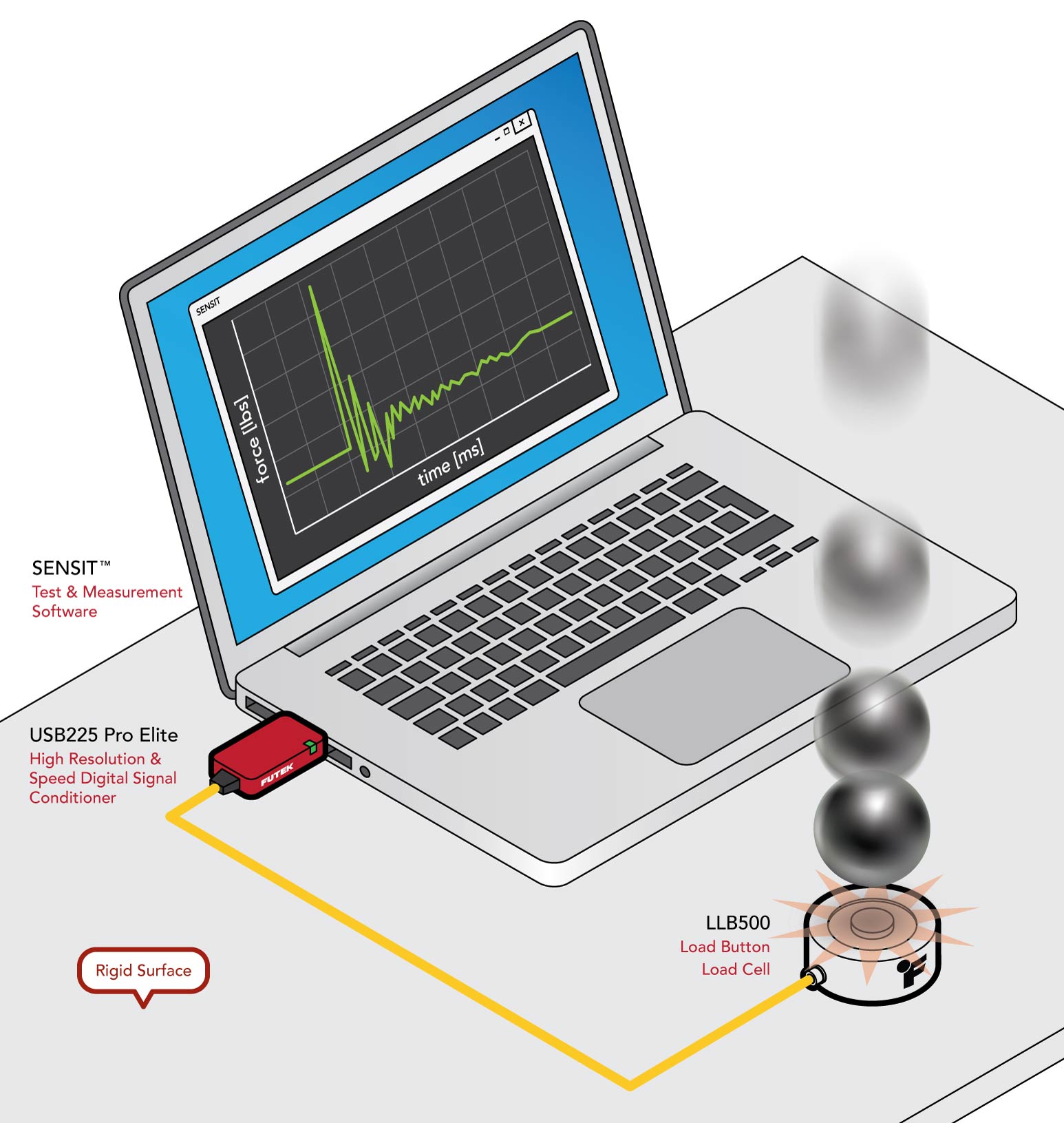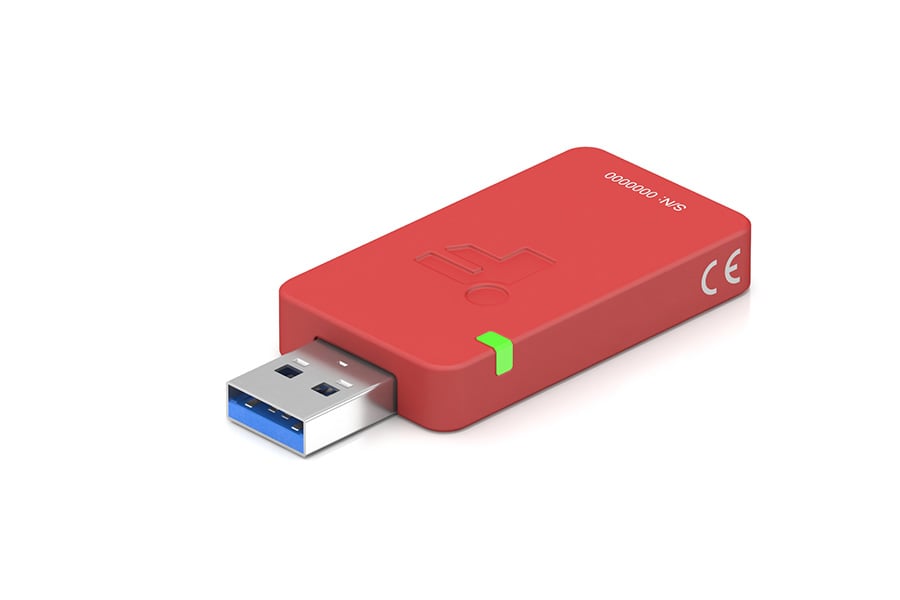What is Drop Ball Test?
A drop ball test is a standardized procedure used to evaluate the impact resistance and energy absorption characteristics of various materials and products. It involves dropping a ball of a specified weight and diameter from a predetermined height onto the test specimen. The impact force that is generated upon contact with the specimen is measured to assess its ability to withstand impact-related stresses.
Impact tests are widely employed in various industries. Some examples include:
- Sports Equipment Testing: Load cells measure impact forces on sports equipment, providing insights into performance and safety for athletes' well-being.
- Automotive Crash Testing: Load cells measure impact force in crash tests, analyzing vehicle performance and safety by integrating them into dummies or structures.
- Aerospace and Defense Testing: Load cells assess impact resistance, structural integrity, and safety in aerospace and defense industries, aiding collision and emergency landing analysis.
- Packaging Industry: Load cells evaluate impact forces during transportation and handling, safeguarding fragile or sensitive goods with precise measurement and packaging material assessment.
Some relevant standards related to impact force measurement are:
- ASTM E23 Standard Test Methods for Notched Bar Impact Testing of Metallic Materials;
- ISO 6487:2015 - Measurement Techniques in impact tests;
- SAE J211: Instrumentation for Impact Test;
- ISO 2248:1985 Packaging — Complete, filled transport packages — Vertical impact test by dropping.
How Load Cells are Used in Drop Ball Test Equipment
The load cells that are used in ball drop testers are specifically designed to withstand high-impact forces and provide reliable and repeatable measurements. By carefully selecting a drop ball test force sensor with appropriate specifications, such as high natural frequency response and sensitivity, engineers can measure drop test forces in a wide range of applications. It is important to highlight that dampening of the measurement apparatus and fixturing, can greatly impact results on the total sysmte.
Furthermore, the presence of additional mass on the testing rig can affect the accuracy of the impact force measurement. Care must be taken to minimize any extraneous mass that could interfere with the precise measurement of the forces exerted during the ball drop test. That said, it is paramount to assemble a testing setup that minimizes dampening effects on the exerted force so that the load cell sensor can accurately capture the exact impact force.
How it Works
Load Cell: FUTEK offers a range of high-quality impact force sensors that meet the demands of even the most challenging scenarios. FUTEK highly recommends the LLB500 Load Button, which provides exceptional accuracy with a high natural frequency response of up to ~20 kHz.
Signal Conditioning: To process and amplify the mV/V load cell output signal, a digital USB signal conditioner is utilized. FUTEK's USB225 Pro Elite is an ideal choice for drop ball tests, as it offers high-speed signal sampling (up to 38,400 SPS) and advanced filtering capabilities. This ensures precise capture of the peak and impact forces, enabling detailed analysis of the material's behavior under impact conditions.
Data Logging and Analysis: To record and analyze the impact force data, reliable data logging software is essential. FUTEK's SENSIT data logging software combined with the load cell and the signal conditioner provides a comprehensive solution for capturing, conditioning, visualizing, and interpreting the impact force data obtained from drop ball tests. It enables engineers to identify critical force parameters, evaluate material performance, and make data-driven decisions.
Contact Us
Please Contact Us with questions.
What is Drop Ball Test?
A drop ball test is a standardized procedure used to evaluate the impact resistance and energy absorption characteristics of various materials and products. It involves dropping a ball of a specified weight and diameter from a predetermined height onto the test specimen. The impact force that is generated upon contact with the specimen is measured to assess its ability to withstand impact-related stresses.
Impact tests are widely employed in various industries. Some examples include:
- Sports Equipment Testing: Load cells measure impact forces on sports equipment, providing insights into performance and safety for athletes' well-being.
- Automotive Crash Testing: Load cells measure impact force in crash tests, analyzing vehicle performance and safety by integrating them into dummies or structures.
- Aerospace and Defense Testing: Load cells assess impact resistance, structural integrity, and safety in aerospace and defense industries, aiding collision and emergency landing analysis.
- Packaging Industry: Load cells evaluate impact forces during transportation and handling, safeguarding fragile or sensitive goods with precise measurement and packaging material assessment.
Some relevant standards related to impact force measurement are:
- ASTM E23 Standard Test Methods for Notched Bar Impact Testing of Metallic Materials;
- ISO 6487:2015 - Measurement Techniques in impact tests;
- SAE J211: Instrumentation for Impact Test;
- ISO 2248:1985 Packaging — Complete, filled transport packages — Vertical impact test by dropping.
How Load Cells are Used in Drop Ball Test Equipment
The load cells that are used in ball drop testers are specifically designed to withstand high-impact forces and provide reliable and repeatable measurements. By carefully selecting a drop ball test force sensor with appropriate specifications, such as high natural frequency response and sensitivity, engineers can measure drop test forces in a wide range of applications. It is important to highlight that dampening of the measurement apparatus and fixturing, can greatly impact results on the total sysmte.
Furthermore, the presence of additional mass on the testing rig can affect the accuracy of the impact force measurement. Care must be taken to minimize any extraneous mass that could interfere with the precise measurement of the forces exerted during the ball drop test. That said, it is paramount to assemble a testing setup that minimizes dampening effects on the exerted force so that the load cell sensor can accurately capture the exact impact force.


